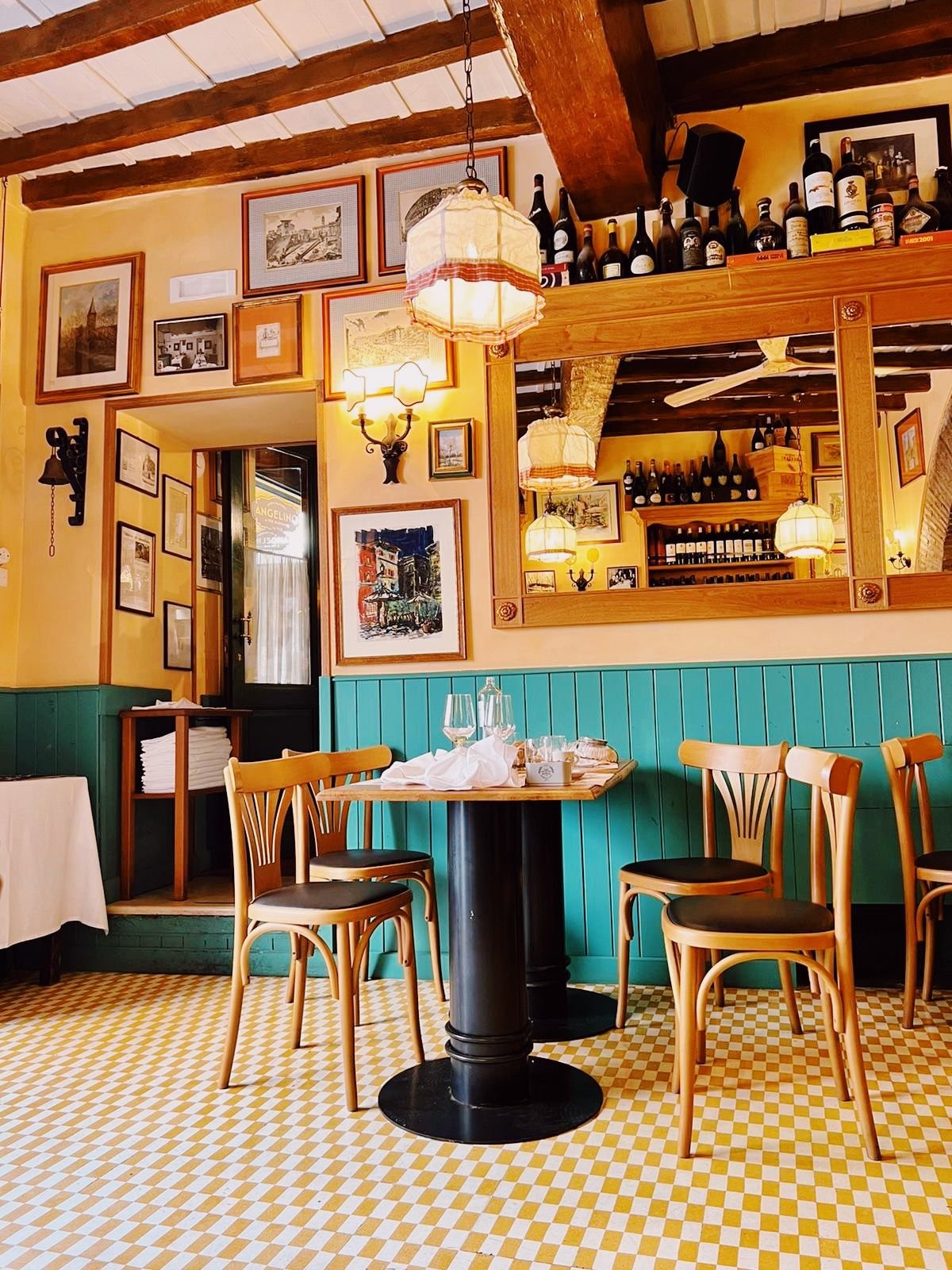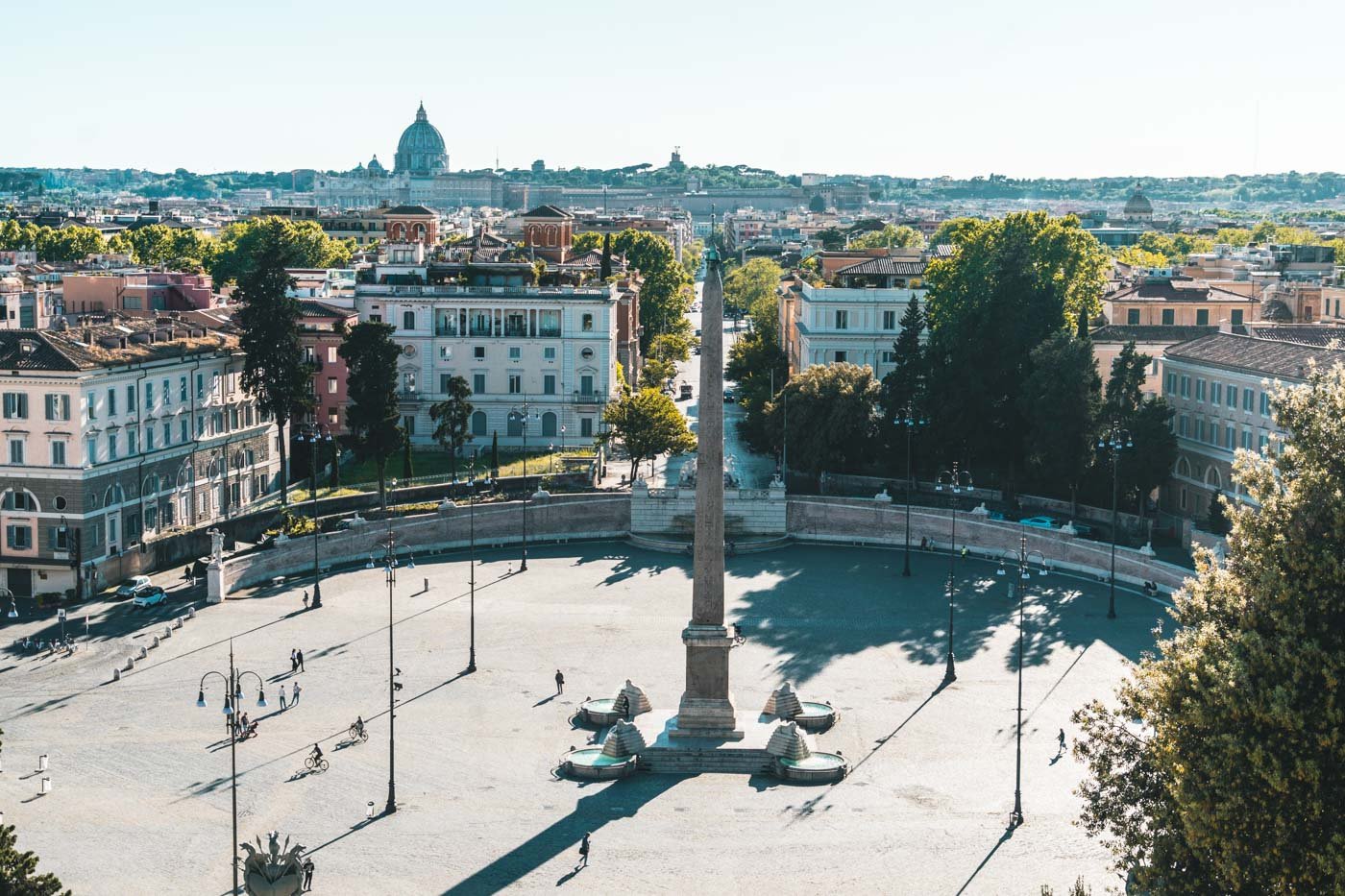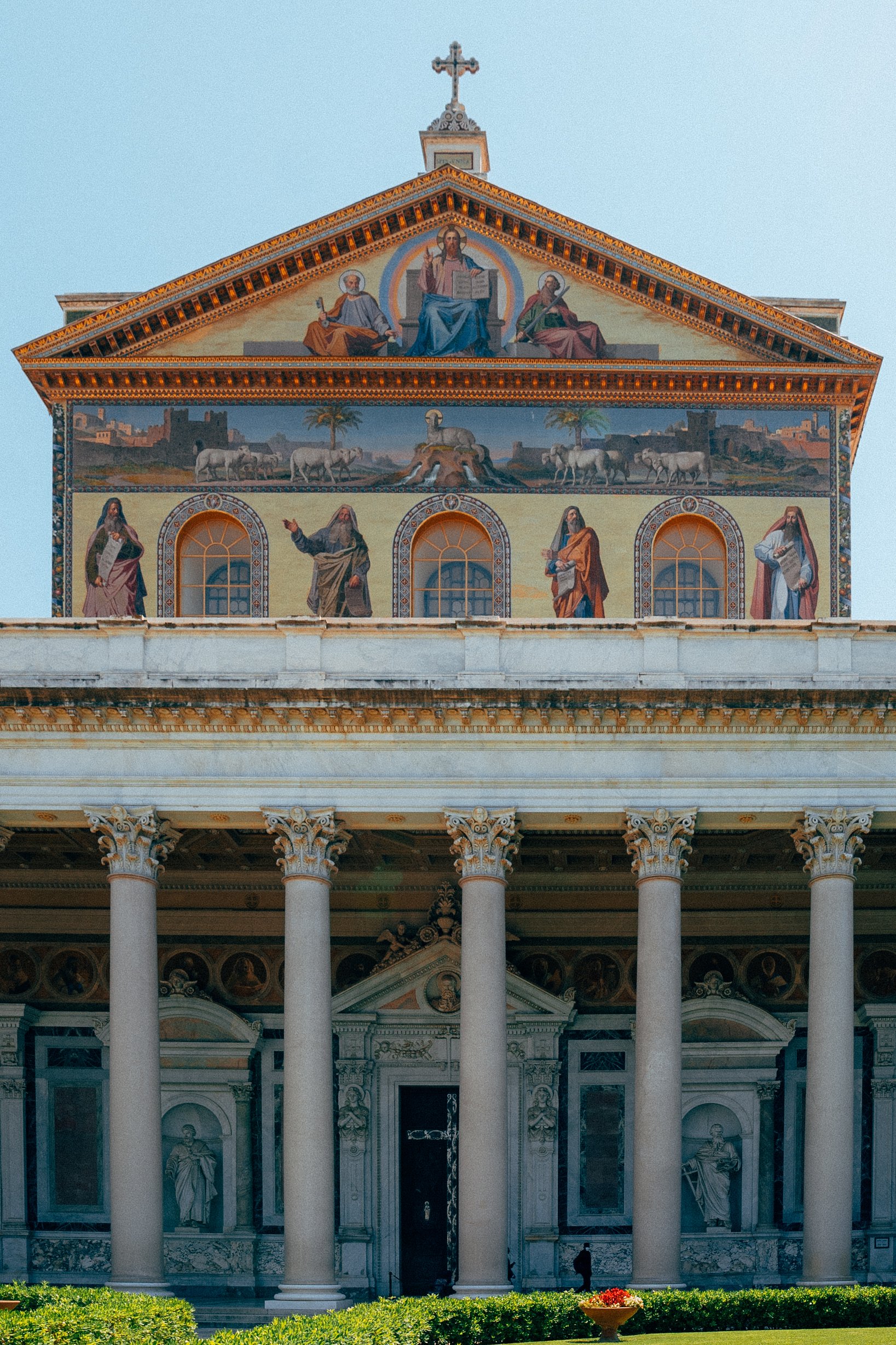Explore Rome like a local
Having been somewhat of an Italian local for the past six years, I get this question a lot: “I’m coming to Rome, can you give some local tips?” Of course I can! On this page, you’ll find some of the best places in Rome according to someone who’s lived there - both in the most popular, central areas and in more residential districts, where you’ll have a more local experience. Enjoy the Eternal City!
Text & photos by Liza Karsemeijer
Disclaimer: I’m not a guide or a travel agency and this list is by no means exhaustive, it just includes some of my favourite places and pieces of advice I would give to a friend visiting Rome. I’ve also added a bunch of links to articles I wrote for other websites, in case you’re looking for more inspiration. Of course, my favourites are personal: if you visit some of the places I recommend here, I’d be curious to hear what you thought of them, so be sure to reach out and let me know! If you want more local tips, you can buy this Rome guidebook from Penguin Random House, written by me and other Roman locals (in English), or the Time To Momo Rome guide by my dear friend Jessica Schots (in Dutch).
Where should I stay?
Where should I eat?
My favourite restaurants in Rome:
Bottega Tredici (sophisticated dishes and classics with a twist in the Jewish ghetto)
Antica Trattoria Angelino (one of the oldest restaurants in Rome, open since 1658, with traditional dishes in a cosy atmosphere in the Jewish ghetto)
La Casetta di Trastevere (down-to-earth and budget-friendly Roman dishes in Trastevere)
Broccoletti (tiny eatery with amazing antipasti and pastas plus lots of vegetarian options in Monti)
My favourite sandwiches / snacks in Rome:
Zia Rosetta (great panini in Monti, also available in mini size so you can try different ones)
Trapizzino (a hybrid between a pizza and a sandwich, available with different delicious fillings. They have shops in Trastevere, Termini, Testaccio, and Ponte Milvio)
Supplìzio (a supplì is a typical Roman delicacy: it’s a fried, crispy riceball and it’s available with different fillings. Supplìzio has shops spread out over the centro storico)
Antica Trattoria Angelino, Jewish Ghetto
Bar Samovar, Trastevere
My favourite aperitivo spots / bars / places to meet friends in Rome:
Bar Perù (cosy, unpretentious, great atmosphere, ánd decent cocktails in centro storico)
San Calisto (cheap drinks and amazing atmosphere in the heart of Trastevere)
Bibliobar (cute open-air kiosk next to Castel Sant’Angelo that’s open year-round)
Osteria delle Coppelle (cute bar and restaurant in one of Rome’s most beautiful squares in the centro storico)
Piazza della Madonna dei Monti (here, Romans and travelers alike gather around the fountain for a beer or glass of wine bought at the bar across the piazza. Drinking on the streets is allowed on this specific piazza until a certain time, but the rules sometimes change; just follow the locals’ example)
My favourite wine bars in Rome:
Enoteca Buccone (century-old winebar behind Piazza del Popolo with the nicest owners and small but good menu)
Il Goccetto (typical, classic wine bar in the centro storico, great for people-watching and their taglieri are amazing)
La Mescita (cute wine bar with natural wines and sophisticated bites in Garbatella)
My favourite vegetarian restaurants in Rome:
Il Margutta (vegetarian and lots of vegan options, plus changing art exhibitions, behind Piazza del Popolo)
Mater Terrae (rooftop vegetarian restaurant of luxury hotel Raphaël in the centro storico, they have a green Michelin star and are not cheap but worth it)
Grezzo Raw Chocolate (for vegan, gluten-free ice cream, hot chocolate, and sweets, with shops in both the Jewish ghetto and Monti)
Ecrù (small eatery with vegan and raw cuisine in the centro storico)
My favourite places for coffee in Rome:
Faro (Rome’s first specialty coffee for a very decent price in Piazza Fiume)
Barnum (cute coffee house in the centro storico)
Sant’Eustachio (this one a classic: they’re said to have the best coffee in Rome and it’s often very crowded, but worth it. Stand at the bar, don’t sit down unless you want to pay double)
Marigold (Scandinavian-style bakery in Ostiense, also a great place for brunch)
More of my favourites in these articles:
What should I do?
Rome’s historic centre (I’m talking about the area within the Aurelian walls) is big, but not gigantic: if you brought some comfy shoes, it’s small enough to discover on foot, which is also the best way to take in all of its beauty. Don’t worry if you don’t manage to tick all of the tourist hotspots off your list or if your museum of choice is already fully booked: most of them are beautiful to look at from the outside, too. Plus: there are plenty of less popular museums and activities that are just as nice (see below).
Which museums should I visit?
The lines are there for a reason - Rome’s most popular cultural sites are definitely worth your time - but the opposite is not necessarily true. If a museum doesn’t show up on must-visit lists and no one is queueing up to go inside, that definitely doesn’t mean it’s not worth a visit. These places might even be a better option if you’re looking for a last-minute activity or just don’t feel like sharing the experience with hundreds (sometimes thousands) of other travelers.
Popular museums and cultural sites that are worth a visit (but be prepared for crowds and make sure to reserve your tickets beforehand - preferably through the museum’s official channels and not through tour companies that resell them):
Vatican Museums (they’re often extremely busy and I’m not the Vatican’s biggest fan, but I’m not gonna lie: their collection is incredible and you should see it at least once in your life. If you’re planning to visit, reserve your timeslot ahead and take at least half a day to see everything. There’s an after-hours tour of the Sistine Chapel, which I recommend: it costs a bit more but you’ll be allowed inside after closing time, where you’ll share this masterpiece with only a handful of other people)
Galleria Borghese (small museum inside Villa Borghese park, but with an amazing collection, including some of Bernini’s masterpieces. Seeing everything won’t take you more than two hours, so it’s great for kids and groups with mixed interests as well)
Colosseum and Roman Forum (the combination ticket includes entrance to both. I recommend booking the night tour of the Colosseum, which is the only way to see the amphitheatre’s undergrounds)
Pantheon (entrance is free but the lines tend to be quite long - come early in the morning and during the week if you want to avoid these)
Musei Capitolini (series of museums on top of Capitoline Hill; includes some of the most important artifacts from Ancient Rome as well as stunning Renaissance art. Don’t skip the bar: Terrazza Caffarelli boasts one of the most stunning views of Rome)
Museum Centrale Montemartini, Ostiense
Basilica of Saint Paul Outside the Walls, Ostiense
More ‘under the radar’ museums, usually without tourist crowds or queues:
Museo Nazionale Romano (impressive collection of archaeological findings from Ancient Rome. Great value for money: the ticket is valid for a week and includes entrance to Palazzo Altemps, Palazzo Massimo, Baths of Dioclethian, and Crypta Balbi, and they’re all very much worth a visit)
Centrale Montemartini (former electricity plant that now serves as the backdrop of ancient Roman statues and stunning mosaics)
Ostia Antica (Rome’s ancient harbour, now a beautiful archaeological park. Great for a sunny day: combine your visit with lunch or aperitivo on the beach!)
MAXXI Museum (modern and contemporary art, architecture, and design in an architectural masterpiece by Zaha Hadid in a residential neighbourhood. The restaurant’s garden terrace is great for lunch al fresco or aperitivo in summer)
Museum MACRO (former Peroni beer factory extended with modern architecture, now housing a modern and contemporary art museum with changing exhibitions and a nice museum shop. Plus: entrance is free)
Galleria Nazionale d’Arte Moderna (modern and contemporary art masterpieces - from Duchamp to Klimt - in an imposing, 19th-century building near Villa Borghese park. Includes very cute bar for drinks afterward)
Villa Torlonia (quirky park with multiple museums and points of interest: there’s the neoclassical Casino Nobile that houses a museum, the fairytale-like and eclectic Casina delle Civette, and the Serra Moresca, an Arabic style greenhouse with a stunning façade in stained glass)
Contemporary Cluster (art and design gallery tucked away in a beautiful palazzo; includes a magazine shop with indie publications as well)
The Square Colosseum, EUR
Museum MAXXI, Flaminio
What else should I do?
My main advice for Rome is: leave some room in your schedule to discover the city’s lesser-known hotspots. Here’s a couple of ideas for original activities:
Explore Rome’s more residential neighbourhoods outside of the Aurelian walls, where you’re more likely to blend in with the locals and find authentic restaurants without tourist menus. Some of my favourites include Pigneto (cosy, left-winged working-class neighbourhood with a village feel, trendy bars, and cute boutiques), Ostiense (post-industrial district with an international character and lots of impressive street art), San Lorenzo (Rome’s student district), Coppedè (eclectic and elegant 1920s architecture), and Trieste (residential area filled with beautiful palazzi and charming restaurants). Not necessarily pretty but definitely interesting is EUR, Rome’s business district that dates back to the Fascist era. It gives you an idea of how Mussolini saw the future of Italy: wide streets and massive marble-clad buildings that remind of classic Roman architecture but without the ornaments. The best example of that is the Palazzo della Civiltà Italiana, also called the Square Colosseum: an impressive and very Instagrammable piece of architecture.
Go to the park: Rome has dozens of them. Besides the famous Villa Borghese, there are many more green areas to explore: I really like Villa Doria Pamphili (great for lunch al fresco at Vivi Bistrot) and Villa Ada (you’ll feel like being in a forest).
Go vintage shopping: Rome has some excellent shops and markets. Mercatino Usato is an Italian chain of second-hand shops that sell about anything. There’s usually a corner dedicated to clothing and shoes and I’ve found some of my favourite vintage pieces there. Porta Portese is a huge, open-air Sunday market that sells about anything, but it’s best to come early if you want to avoid crowds here. Smaller markets include Alcazar Market in Trastevere (indoor market at one of Rome’s most popular music venues) and Borghetto Flaminio near Piazza del Popolo (my personal favourite for vintage designer brands).
Do a treasure hunt: if you’re looking for a fun and original activity, Secret City Trails offers interactive, adventurous, self-guided discovery walks. My friend Jessica Schots made this one, I tried it out and it’s a really fun thing to do in a couple or a group of friends (you can divide into smaller groups and see who gets to the finish first).
Take a day trip: the region of Lazio is amazing. Some of my favourites in a two-hour radius from Rome (by car) include Tivoli (with Villa d’Este and Villa Adriana), Bracciano, Castel Gandolfo, Civita di Bagnoregio, and the Gardens of Ninfa.
Detail of Bernini’s Apollo and Daphne in Galleria Borghese
The neighbourhood of Coppedè
Anything else I should know?
Rome can be tricky to get around because public transport doesn’t always run on time (or show up at all). As long as you’re staying in the centro storico and you’re not in a rush, your best option is walking.
If you feel up to it, I’d recommend renting a bike, especially if you’re planning to discover the neighbourhoods outside of the Aurelian Walls, because you’ll be much faster than with public transport (use the freefloating bike apps like Dott and Lime or rent your own for multiple days). Just be very careful, because Roman traffic isn’t exactly a walk in the park.
Want to get to your hotel or b&b from the airport without paying for a taxi or are you planning to take a day trip? You can use car sharing (Enjoy and ShareNow are the two biggest ones), but you should create an account a few days before your trip because the service might take a while to approve your driver's license. I don’t recommend using a car to get from A to B once you’re in the centre, as navigating Roman traffic and finding a parking spot can be stressful.
Bus and tram drivers usually don’t sell tickets, so you have to get them before you get in at a ticket machine or a tabaccheria (just look out for the big T sign). Or download the MooneyGo app beforehand and buy your tickets digitally.
Be mindful of tourist traps: from pushy waiters trying to get you into their restaurant (never a good sign) to guides trying to sell you expensive ‘skip the line’ tickets for Saint Peter (all churches in Rome can be visited free of charge). Rome is a tourist hotspot and there are always people who will try to take advantage of that, so get your info from official sources and don’t be tempted to buy tickets on the spot from people on the street.
A little Italian goes a long way. Don’t assume every Italian will understand you when you speak English. Learning some basic phrases will make your life easier.
In the past couple of years, some ancient monuments and pieces of art have been damaged because tourists thought it was a good idea to take a selfie on top of a marble statue, jump inside the Trevi fountain, drive down the Spanish Steps with their Tesla, or write on the walls of the Pantheon. You can’t sit or eat on most open-air monuments in the centro storico, the fines are high and the police aren’t lenient. Don’t be that person.










